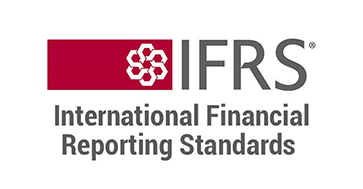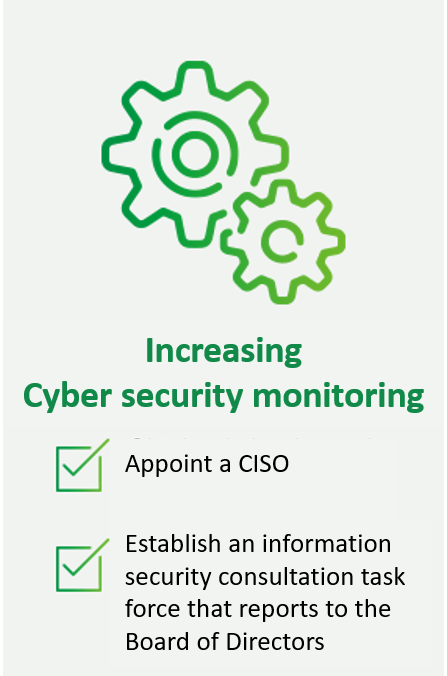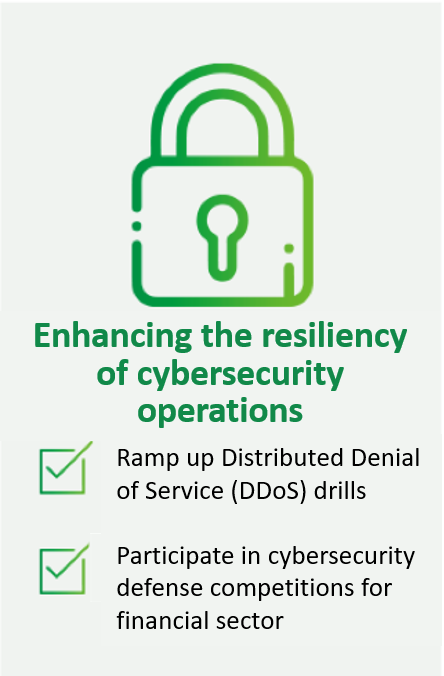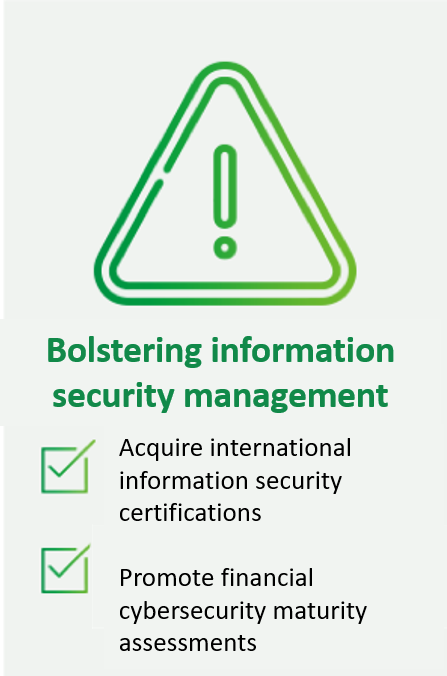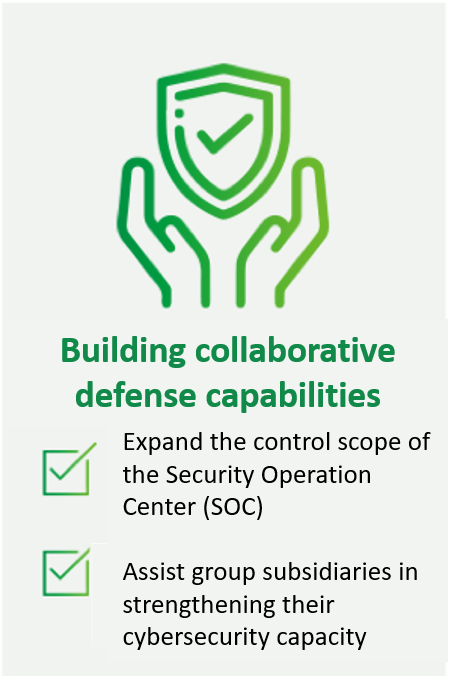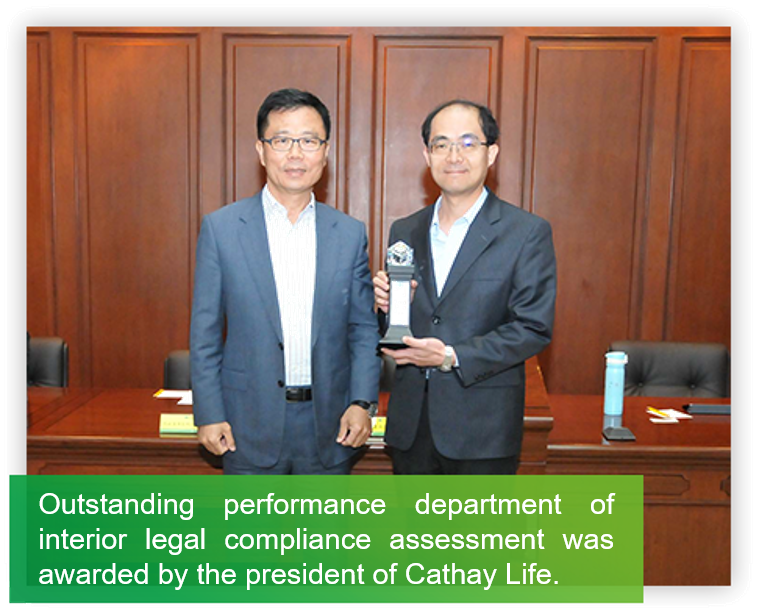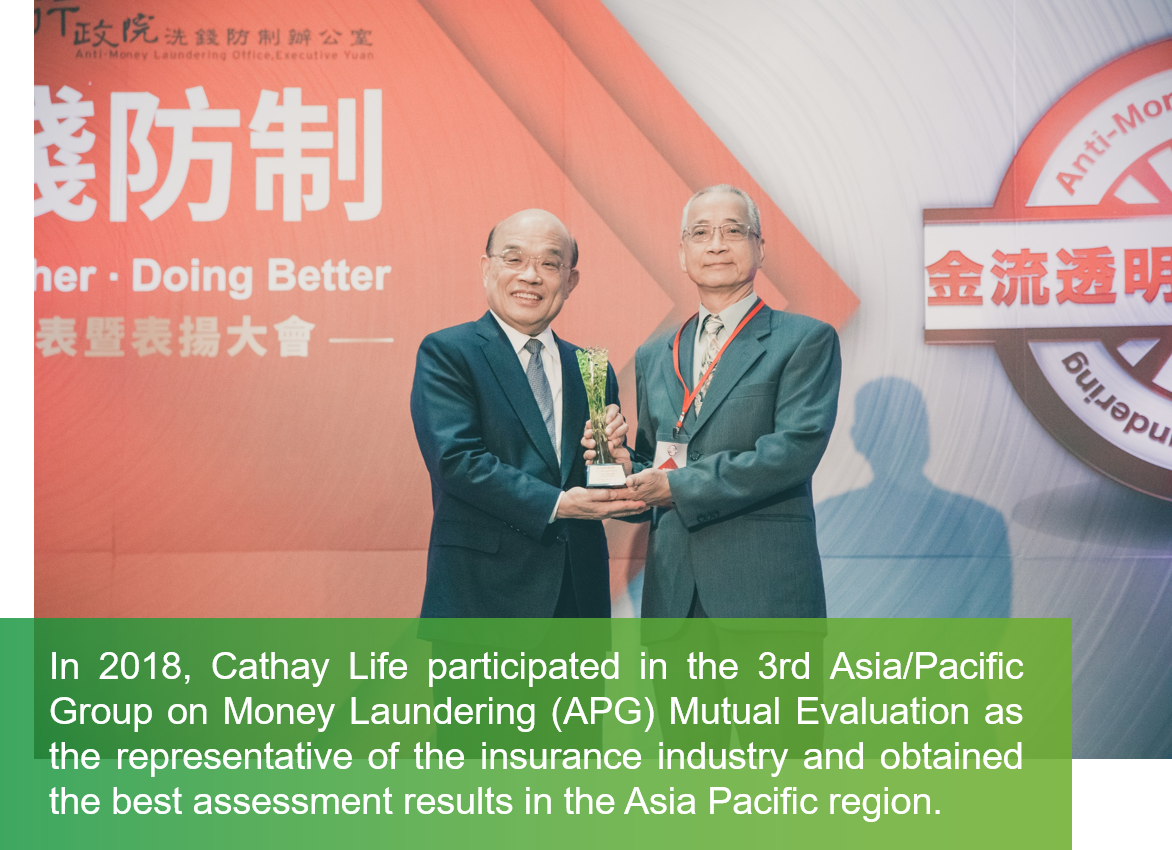Strengthening Risk
Management
Cathay Life upholds the Principles for Sustainable Insurance (PSI) and has incorporated ESG issues into our daily operations.
We monitor and promptly respond to potential operational, financial, and emerging risks in relation to environmental or social trends.
We have established a complete risk assessment process, goals, and response plans through enterprise risk management (ERM),
ensuring the smooth operation of risk management mechanisms, while mitigating the negative impacts of risks when they occur.
Established in 2010 and directly subordinated to the Board of Directors.
The Chairman of the committee is served by an independent director.
The committee consists of several board members as well as functional supervisors, including the President,
the Executive Vice President, the Senior Vice President of the finance and investment system,
the Senior Vice President of the operation and management system, and the Chief Risk Officer (CRO).
The committee convenes quarterly meetings. The Risk Management Department periodically submits work reports on risk management to
the Committee for review and reports to the Board of Directors.
The Risk Management Committee is also the highest-level supervision organization in the company that manages
and monitors climate risks and opportunities.



